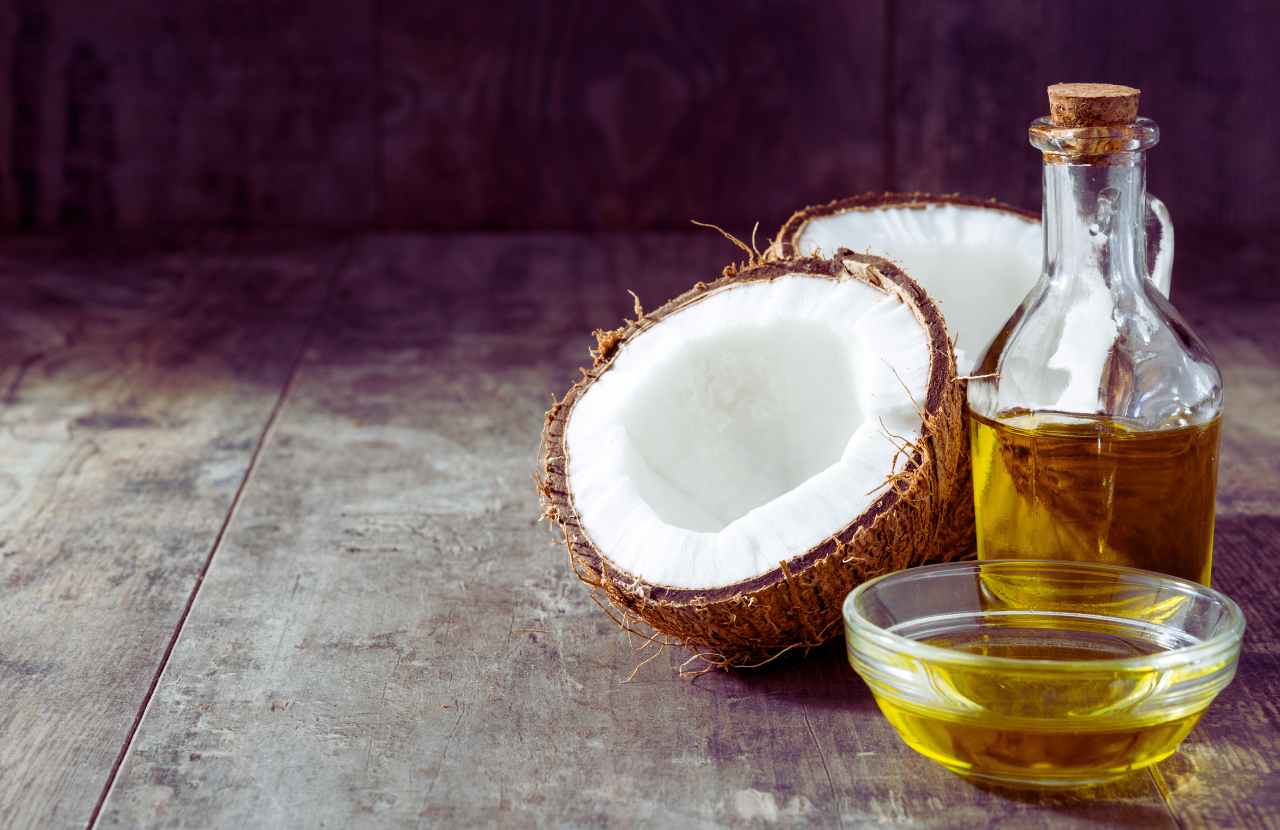Coconut oil has emerged as a popular choice for cooking, thanks to its unique flavor and potential health benefits. Whether you’re baking a batch of cookies or sautéing vegetables, measuring coconut oil accurately can significantly affect your dish’s outcome. In this blog post, we’ll guide you how to measure coconut oil, through the ins and outs of measuring coconut oil, how temperature affects its volume, its impact on dish flavor, and how to substitute it for other fats. We’ll also delve into the health benefits and nutritional information that have made coconut oil a kitchen staple.
Measuring Solid and Melted Coconut Oil
Coconut oil is intriguing because it can be solid and liquid, depending on the temperature. Understandably, this can lead to confusion when measuring it for recipes.
Solid Coconut Oil
When coconut oil is solid, it’s best to use measuring cups or spoons. A top tip is to press the oil into the cup or spoon to ensure no air pockets are left, giving a more accurate measurement.
Melted Coconut Oil
If your recipe calls for melted coconut oil, gently melt it before measuring. Use a microwave or a double boiler, then measure the liquid using a liquid measuring cup.
Remember, 1 cup of solid coconut oil will melt to slightly more than 1 cup of liquid coconut oil. So, the state (solid or liquid) your recipe specifies is crucial for accuracy.
Temperature and Volume
The volume of coconut oil changes with temperature because it shifts from solid to liquid. When melted, coconut oil expands, so a cup of melted coconut oil is not the same as a cup of solid coconut oil. If your recipe doesn’t specify the state of the coconut oil, clarify this first to ensure your measurements are correct. Additionally, room temperature can also affect the volume of solid coconut oil. If you’re melting it in a warm environment, it may already be slightly melted and appear to have less volume.
Impact on Dish Flavor
Coconut oil has a distinct, tropical flavor that can add an unexpected twist to your dishes. While this can be delightful in some recipes, it might overpower others.
The key to using coconut oil effectively is to pair it with ingredients that complement its flavor. It works great in tropical or sweet dishes, like smoothies or baked goods. For savoury dishes, consider refined coconut oil with a more neutral flavour.
Substituting Coconut Oil
In many recipes, coconut oil can be a healthy substitute for butter or other oils. When substituting, remember that coconut oil is denser than other oils. So, you might need to adjust your quantities to achieve the desired texture.
Also, remember that coconut oil’s unique flavour can alter your dish’s taste. Opt for refined coconut oil if you’re looking for a flavor-neutral oil.
Health Benefits and Nutritional Information
Beyond its culinary uses, coconut oil offers various potential health benefits:
- High in Healthy Saturated Fats: Coconut oil contains medium-chain triglycerides (MCTs), which are known to provide quick energy and could help in weight loss.
- May Increase Fat Burning: Some research suggests that MCTs can increase the number of calories your body burns.
- Antimicrobial Effects: The lauric acid in coconut oil can kill harmful pathogens like bacteria, viruses, and fungi.
- Potential to Raise HDL (Good) Cholesterol: Coconut oil may increase HDL cholesterol levels, promoting heart health.
- Potential Skin Care Benefits: Coconut oil can moisturize skin, protect against hair damage, and offer some sun protection.
How to Measure Coconut Oil in Cups?
To measure coconut oil in cups, you need to consider its state — whether it’s solid or liquid. Here’s a simple guideline:
Solid Coconut Oil
When the coconut oil is solid, use a measuring cup for solid ingredients. Spoon the coconut oil into the cup and level off with a knife. Be sure to fill all the spaces to ensure accurate measurement.
Liquid Coconut Oil
If the coconut oil is liquid, use a measuring cup for liquids. Pour the oil into the cup up to the desired marking. Place the cup on a flat surface and check the measurement at eye level to get an accurate reading.
Remember, coconut oil melts around 24°C (76°F), so warmer temperatures will turn it liquid. If your recipe requires a specific state of coconut oil (solid or liquid), you may need to heat or cool it accordingly.
Do you Measure Coconut oil Before or After Melting?
Whether you measure coconut oil before or after melting largely depends on the specific instructions of your recipe. If the recipe mentions “melted coconut oil,” you should measure it after melting. However, if it mentions “coconut oil, melted”, it implies that you should measure the coconut oil in its solid state and then proceed to melt it. The quantity doesn’t drastically change from solid to liquid form, but following the recipe’s specific instructions ensures you achieve the desired consistency and outcome.
Does Melted Coconut Oil Measure the Same as Solid?
The measurement of coconut oil can vary slightly depending on its state — solid or liquid. When it melts, coconut oil expands, so a cup of solid coconut oil might yield slightly more than a cup when melted. However, this difference is not usually significant enough to impact your recipe noticeably. If precision is imperative for your cooking, it’s recommended that you follow the specific measurement instructions given in your recipe regarding the state of the coconut oil.
Final Words
Mastering the art of measuring coconut oil can enhance your culinary skills and expand your cooking repertoire. Like any ingredient, it is key to understand how it behaves under different conditions, its impact on your dishes, and how to substitute it effectively. But the adventure doesn’t stop in the kitchen. With its potential health benefits, coconut oil could be a valuable addition to your lifestyle. So, grab your measuring cups and let’s get cooking!

